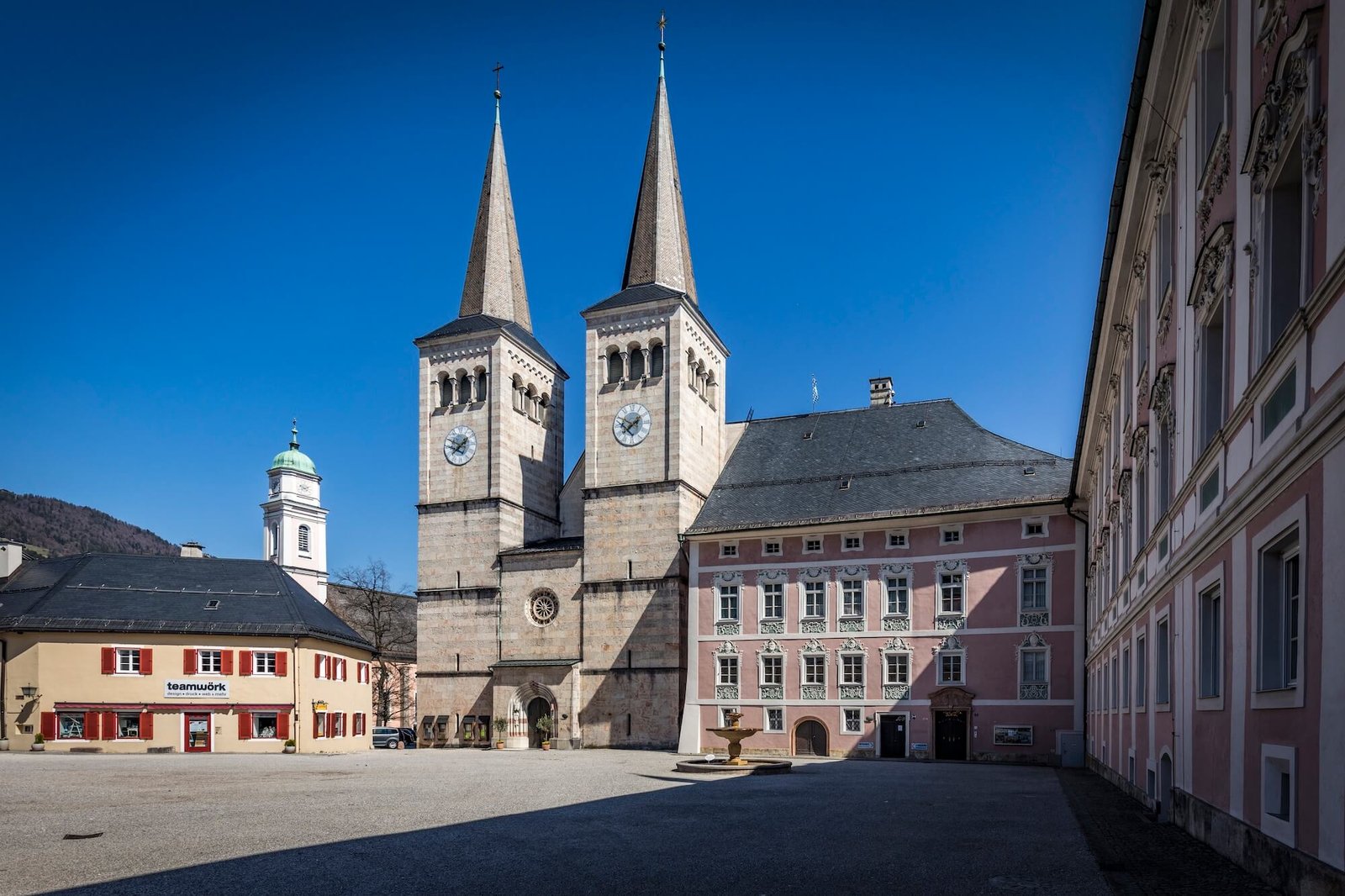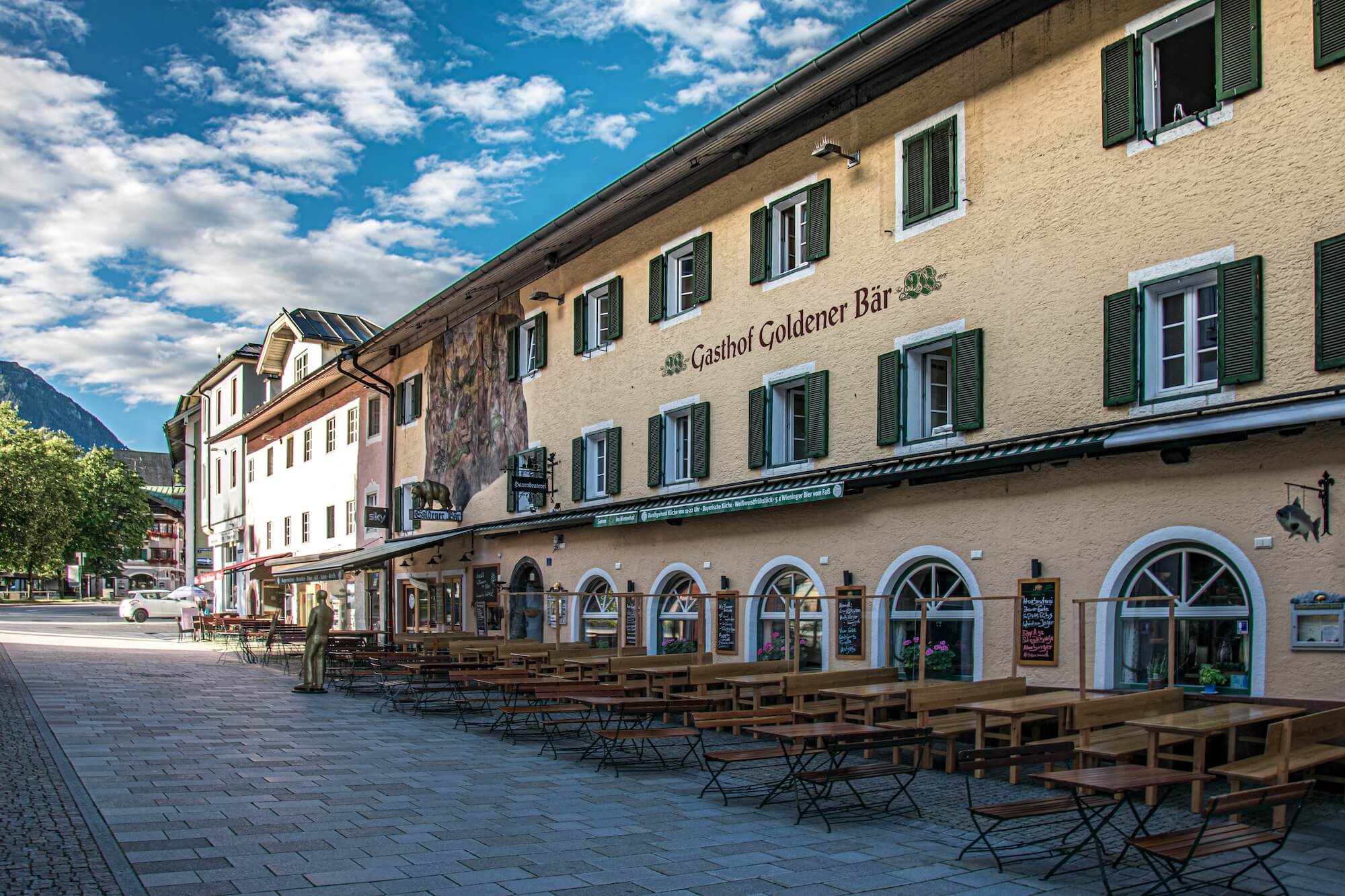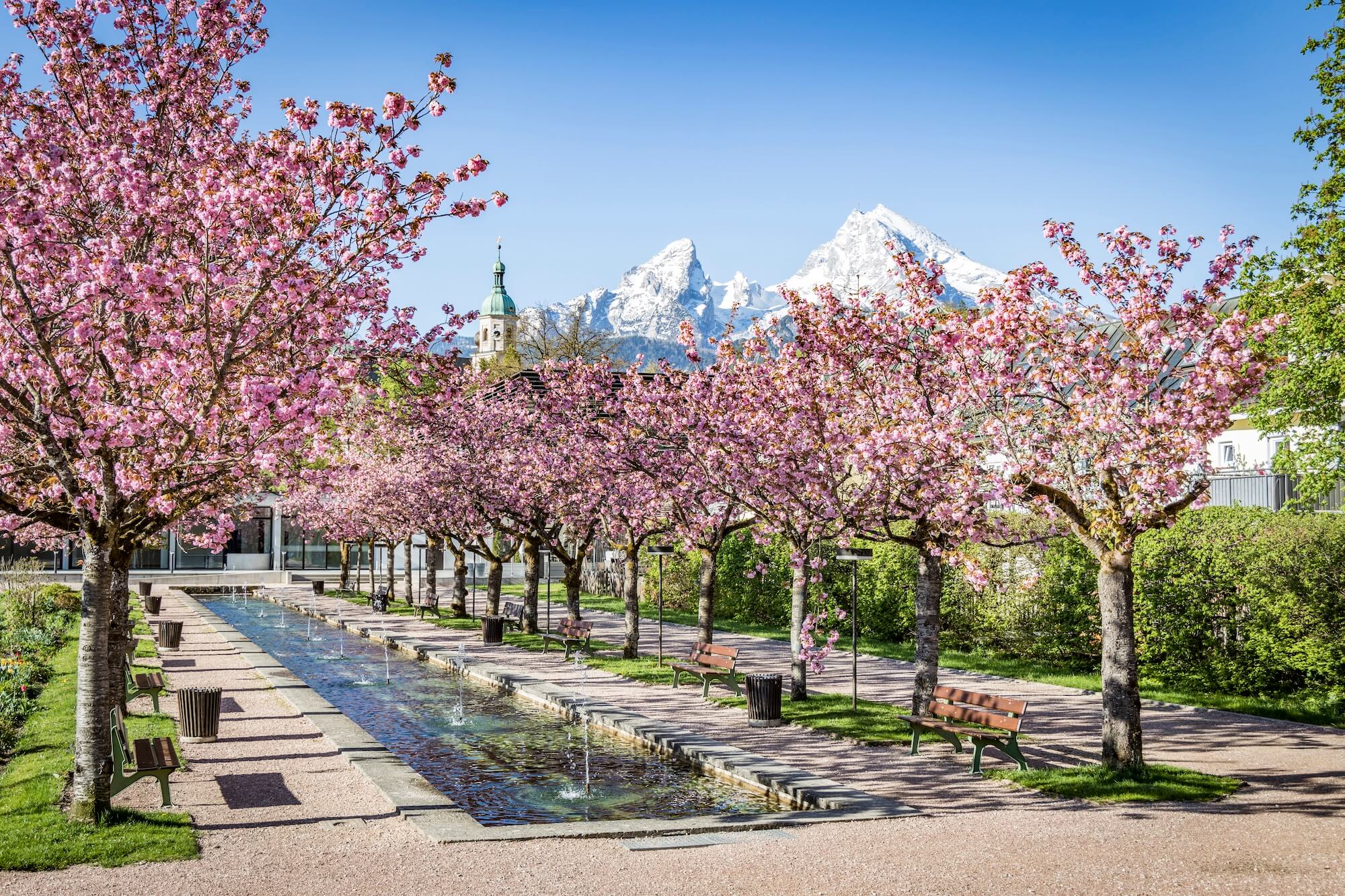
A Brief History of Berchtesgaden
Read on to understand who founded the settlement of Berchtesgaden and how the Bavarian Royal Family, the Second World War and US armed forces have all left their mark on the region.
- 1. Berchtesgaden – German or Bavarian?
- 2. Traces of the Bavarian’s Ancestors
- 3. Berchtesgaden – What’s in a name?
- 4. The Expedient Augustinian Monks of Berchtesgaden
- 5. Salt Mining Increases the Monk’s Power
- 6. Napoleon’s Impact On Berchtesgaden
- 7. The Royal Takeover of Berchtesgaden
- 8. Bismark’s Creation of a Unified Germany and the Abdication of the Royals
- 9. Berchtesgaden and the National Socialists (Nazis)
- 10. The Second World War Concludes
- 11. The Wirtschaftswunder
- 12. US Armed forces and Berchtesgaden
- 13. Berchtesgaden in 2024
1. Berchtesgaden – German or Bavarian?
As a tourist considering Germany, the first thing that springs to mind is usually the stereotypical collection of snow-covered mountains, large glasses of beer, alpine meadows and traditional German dress – leather shorts (Lederhosen) and long dresses gathered at the waist (Dirdnl).
The reality of these images is that what is stereotypically considered German is, in fact, Bavarian. Berchtesgaden could be said to be one of the most Bavarian, if not the most Bavarian, of Bavarian towns. At only 35 square kilometres (14 square miles), this small town at 700m (2300ft) above sea level certainly ticks all the stereotypical boxes, but it also has a rich history extending back to 1100 when the ruling classes from neighbouring Salzburg used to hunt in this area.
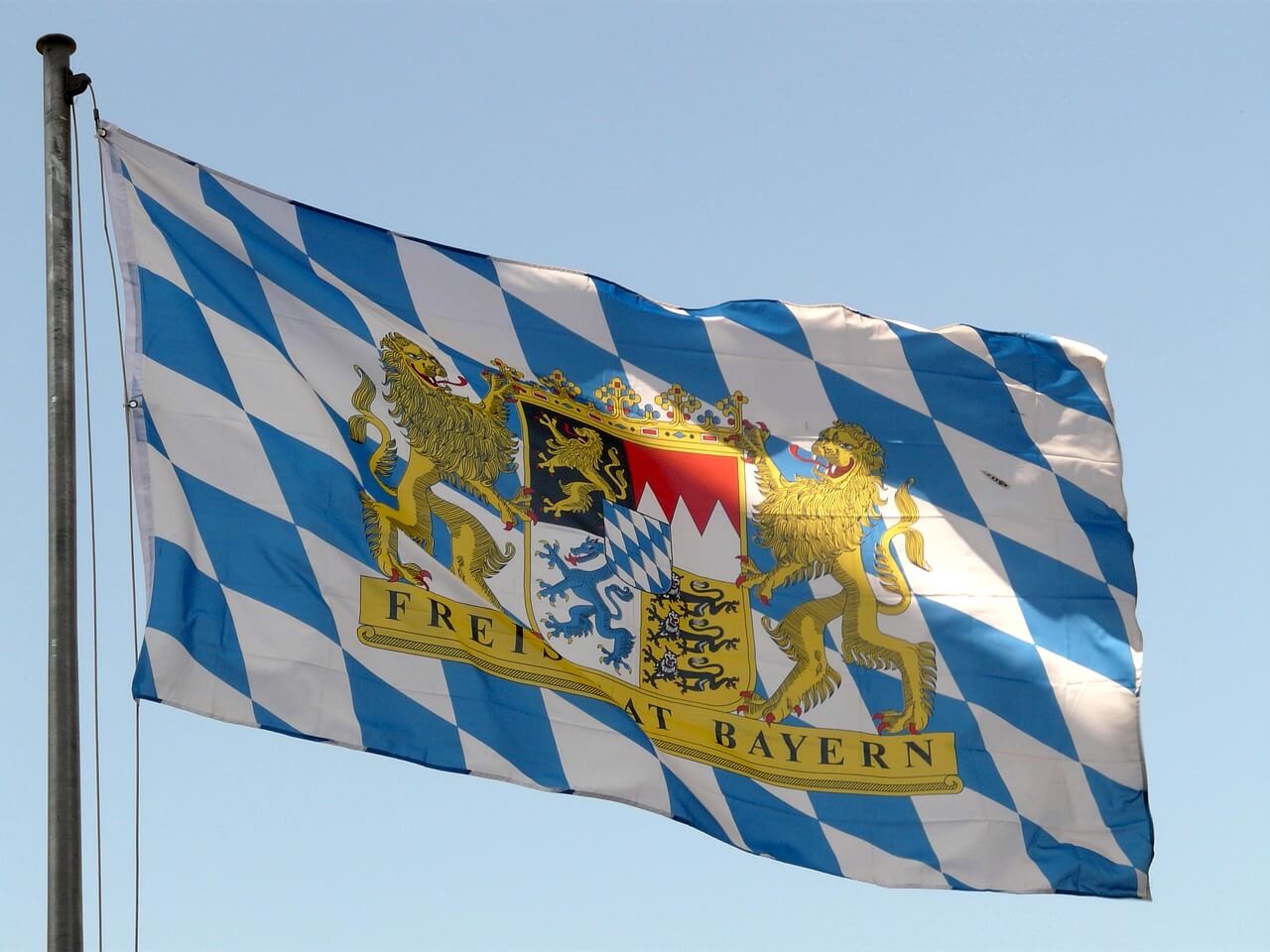
As per the USA, what we today think of as Germany is a collection of states (Bundesländer) that were brought together to re-form Germany during the re-unification in 1990, some 119 years after Bismarck first formed our modern idea of Germany in 1871.
Bavaria is one of these states and its borders have fluctuated over time, especially so during the Napoleonic wars. Today it remains the largest state in Germany, nestled at the bottom right hand corner of the country sharing borders with Austria and the Czech Republic. Along its southern border with Austria lie the Alps and right on the border, as far south west as you can get in Germany, you’ll find Berchtesgaden, just a stone’s throw from Salzburg in Austria. Berchtesgaden is in Germany, albeit by the skin of its teeth.
Although the state of Bavaria is an unfamiliar one for many English-speaking tourists, nearly every visitor will be familiar with at least one of Bavaria’s famous sons, including, amongst others; musical maestros Bach, Beethoven, Handel, Haydn, Mozart and Wagner; Bauhaus members and expressionist painters Wassily Kandinsky and Paul Klee; renaissance wood carver Tilman Riemenschneider; painters Albrecht Dürer, Hans Holbein and Holbein the younger.
2. Traces of the Bavarian’s Ancestors
We can trace the Bavarians as an identifiable group of people back over 2,500 years ago, when the Celts first appeared in this part of Europe. One of the Celts’ legacies was the establishment of salt mining in the region, a fact demonstrated by the presence of their word for salt (Hall) is so many place names local to Berchtesgaden – Hallein and Bad Reichenhall, for example.

A dip into European history wouldn’t be complete without a mention of the Romans and the history of Berchtesgaden and Bavaria isn’t an exception; in 15BC Augustus Caesar’s armies triumphed over the entirety of southern Germany in a single year and ruled for the next half a century, establishing many camps that provided the basis of many major Bavarian towns and cities that still exist today: Passau, Regensburg and Augsburg are amongst their number.
The decline of the Roman Empire and consequent establishment of the Ostrogoth Empire in the late 5th century marked the end of this period under Roman control and it wasn’t long until Christianity began to spread to Bavaria, thanks primarily to the influence of Irish immigrants of the Roman Catholic church. This religious influence was furthered by the incorporation of Bavaria into the Holy Roman Empire of Charlemagne in the 8th Century.
3. Berchtesgaden – What’s in a name?
The founding of Berchtesgaden and the town’s name are a direct consequence of the area’s proximity to Salzburg. In the 11th Century the area we today refer to as Berchtesgaden was not yet part of Bavaria but in fact hunting land used by Lord Perther from Salzburg. As an avid hunter, he was accustomed to longer trips and to this end had a simple one room hunting lodge built in the area, a facility known as a Gaden in the dialect of the time. Hence the structure itself – Lord Perther’s Gaden – seeded the name that would, over time, remain with the location and gradually drift towards the high German name of Berchtesgaden we know today. Hence Berchtesgaden can be translated to mean ‘Lord Perther’s Gaden.’ Pronunciation of Berchtesgaden is not too tricky for the English tongue, the name simply needs to be phonetically split into three constituent parts: Berch, tes and gaden. Spoken out loud as Berch-tes-gaden, one needs to take care to pronounce the “ch” in “Berch” from the back of the throat as you would in the Scottish word “loch”, rather than as a crisp “ch” as in the English word “birch”.
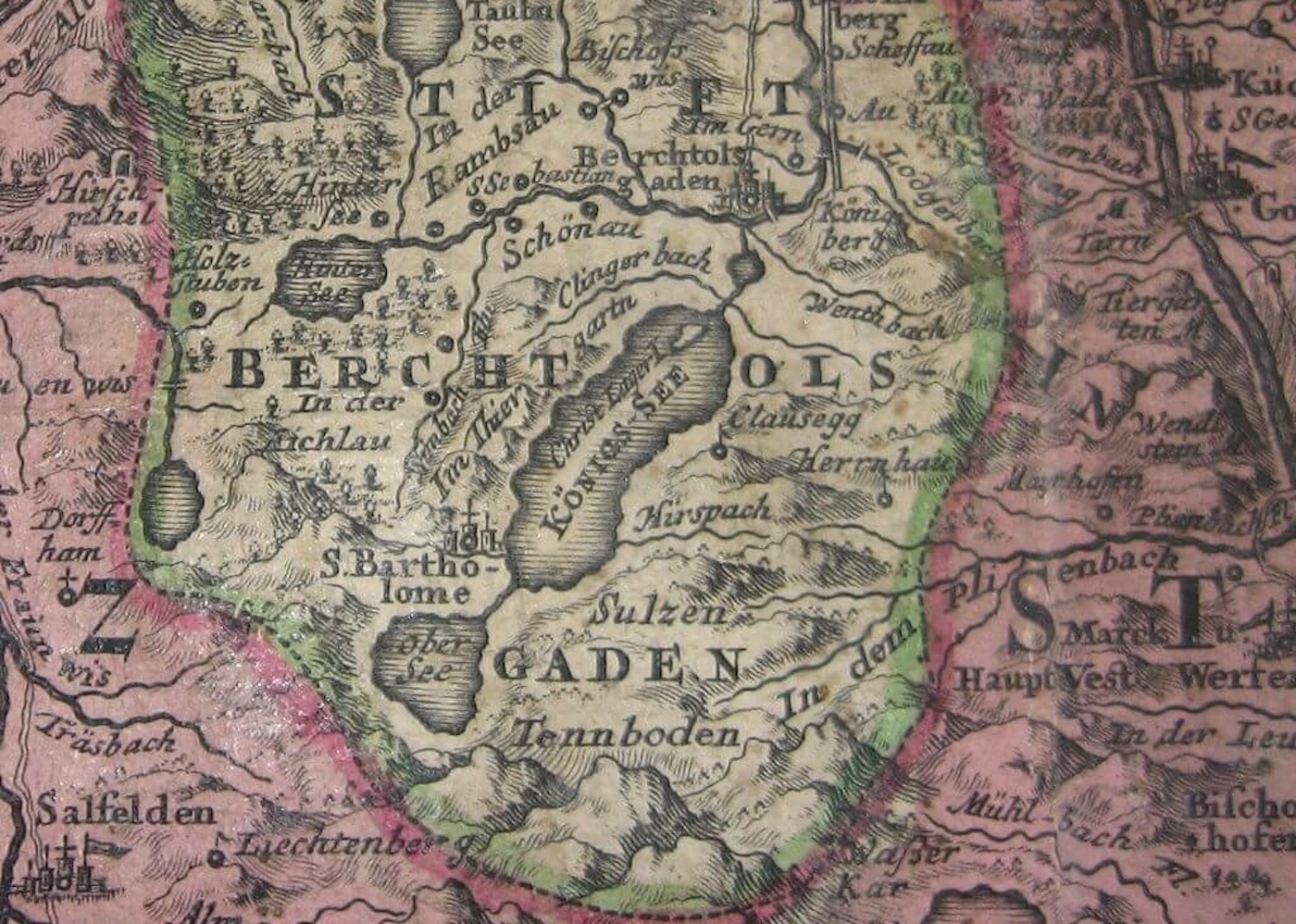
A fellow hunter from Salzburg, Count Engelbert of Sulzbach, is responsible for the establishment of an Augustinian monastery in Berchtesgaden. On one of his hunting expeditions he failed to return to Salzburg and left his wife Irmingard with little choice but to pray to god and promise to build a church in Berchtesgaden should He return her husband alive. Count Englebert did eventually return but it was only on her deathbed that Irmingard implored her sons to fulfil the promise she had made all that time ago and find a group of monks who were up to the task of establishing a monastery in Berchtesgaden. The brothers diligently located a group of Augustinian monks in 1100 and persuaded them to come to Berchtesgaden to begin work on the monastery in 1102. Work proceeded through to 1105 but was then halted, owing to what the monks perceived as the hostile nature of the area. It was only fifteen years later in 1120 that the monks returned, this time under the aegis of a provost named Eberwein, to finish what they started.
4. The Expedient Augustinian Monks of Berchtesgaden
Eberwein’s group wasted no time and had completed their monastery and small chapel by 1122. They were also an expedient group, leaving the farming and bulk of labour to settlers who they had lent property in the area to. These were the same settlers who, in exchange for rights to utilise the land, had to provide a share of their produce or skilled labour to the newly founded monastery. Always keen to further their position, the monastery petitioned Holy Roman Emperor Frederick Barbarossa in 1156 for rights to hunt, fish, graze and produce lumber from the land. Permission was granted, but the monks, still not content and knowing that the mountains in the region were rich with salt, actually forged the Emperor’s signature to also include mining rights for the area.
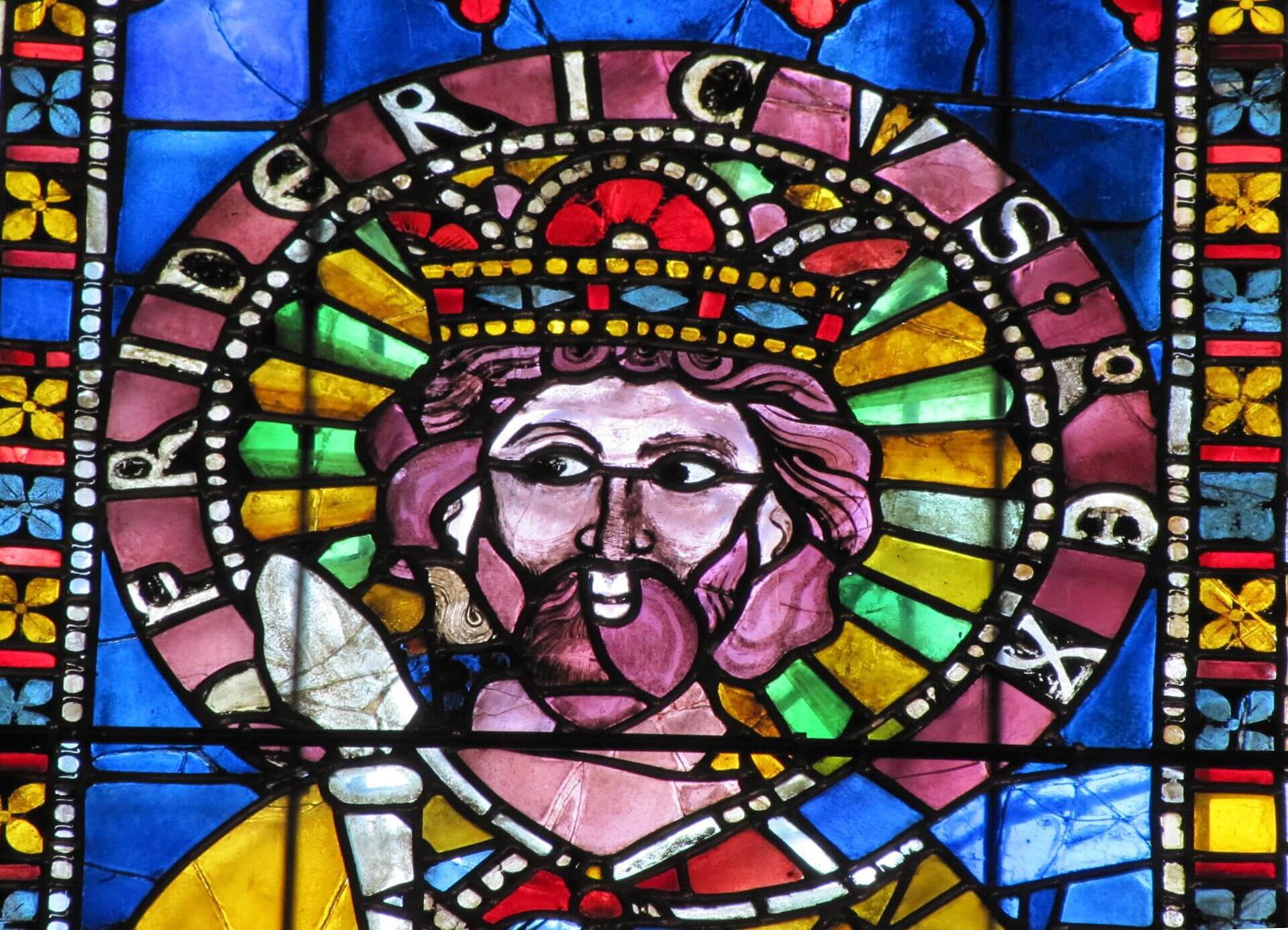
Following the decline of Charlemagne’s Carolinian dynasty were two centuries of dispute over the state of Bavaria, a dispute that continued whilst Lord Perther, Count Engelbert and the Augustinian Monks were busy founding Berchtesgaden. The dispute over Bavaria was ultimately settled in 1180, when the then German emperor of the Holy Roman Empire, Fredrick Barbarossa, granted Otto I of the house of Wittelsbach rights to Bavaria.
If the house of Wittelsbach rings a bell, that’s because they ruled over Bavaria for the 728 years following on from Barbarossa’s decree of 1180, ultimately ending their tenure as the royal family of Bavaria 1918.
5. Salt Mining Increases the Monk’s Power
By 1190 the heads of the Berchtesgaden monastery had a well-established salt mine that could rival Salzburg as the key player in central Europe. This facility grew their power and wealth exponentially and also provided momentum to many other industries within Berchtesgaden; dairy farming, wood carving, toy manufacture, weapon manufacture and instrument manufacture, to name a few. Thus, alongside the house of Wittelsbach in neighbouring Bavaria, the Augustinian monks of Berchtesgaden amassed ever increasing wealth and power that, by 1491, resulted in the upgrade of their power base in Berchtesgaden to an imperial priory.

At this point in the 15th century, Berchtesgaden was now an independent principality, answerable only to the Emperor and Pope, with the ruling members of the monastery enjoying the title of Prince Provosts. It was also at this point in time that several of the local religious sites (chapels, alters, etc.) were upgraded to sites of religious pilgrimage, creating a steady flow of pilgrims who thus supported the development of local guesthouses.
6. Napoleon’s Impact On Berchtesgaden
Berchtesgaden’s elevated status did not, however, allow it to escape the forces of the Napoleonic wars during the early 19th century. Rival salt-producer Salzburg was taken in 1800 by Napoleon’s armies and Berchtesgaden quickly capitulated thereafter. There followed a decade-long game of political chess, where the imperial priory of Berchtesgaden was disbanded in 1803 and the local church administration secularised. By 1810 Bavaria was elevated to the status of kingdom, complete with a royal family as a consequence of its alliance with the (up to then) victorious Napoleon and also awarded the independent town of Berchtesgaden as a prize, taken from Austria.
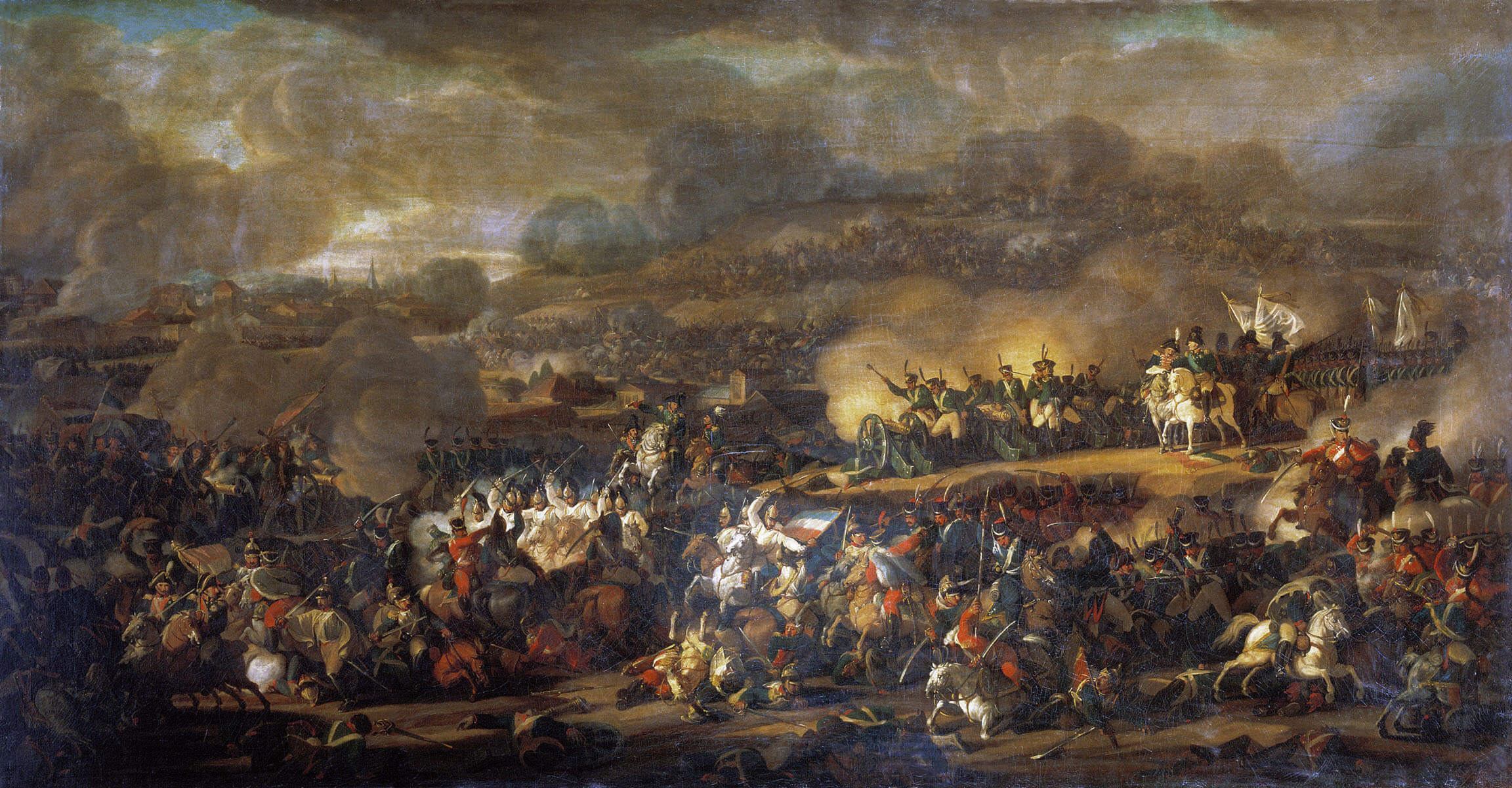
The (now royal) ruling classes of Bavaria were politically expedient and quickly re-aligned their allegiances to ensure they were allied to the victorious Austrians upon the final defeat of Napoleon in 1815, thus ensuring their survival and continued reign over Bavaria.
7. The Royal Takeover of Berchtesgaden
1818 marked the year that, only three years after Berchtesgaden’s incorporation into Bavaria, the Bavarian Royal Family took the town as their summer residence. That the Royal Family should choose the newly incorporated town as their summer residence so soon shows just how well it was regarded. The former monastery was remodelled to suit the needs of the royal family and the now royal palace hummed with visits from heads of state and nobility from all over Europe.

Where the royal family went the public also followed, and it wasn’t long before wealthy members of society started to take summer holidays in Berchtesgaden to emulate the royals. New hotels and villas were constructed to cater for this well to do market, along with the development of accommodation for the writers, mountaineers and hardy tourists who also flocked to Berchtesgaden.
The Bavarian Royals were philanthropists, improving the facilities for the population of Berchtesgaden by modernising the transport infrastructure and upgrading key public facilities; new schools, clinics and hospitals were built by the Bavarian Royal Family. Even the Augustinian monk’s private chapel and hunting lodge on lake Königssee (today the chapel of St Bartholomä) were re-purposed by the Bavarian Royal Family. Should you take the boat ride across lake Königssee you’ll be able to see their hunting trophies still hanging in the hunting lodge.
8. Bismark’s Creation of a Unified Germany and the Abdication of the Royals
Bismark’s creation of the German Empire a half century after the Bavarian Royal Family adopted Berchtesgaden in 1871, tied member states of the newly formed German empire together. Thus, when a state of war was declared by Bismark in 1914, the Bavarians were compelled to follow suit. In response to the nationalist doctrine of the time and mounting losses as the First World War ground on, the socialists in Bavaria mounted a revolution under their leader Kurt Eisner in 1918. Eisner proclaimed Bavaria a Free People’s Republic in the same year and decreed an end to the Royal Family of Bavaria.
Faced with the socialist revolution in Bavaria, King Ludwig III (1845-1921) fled to Berchtesgaden in the hope of sanctuary and time to let the political landscape calm. Things were not to play out as he had hoped and, after being discovered in Berchtesgaden, Ludwig III was forced to abdicate, thus bringing to an end the 728 years of Wittelsbach rule over Bavaria.
A Royal presence in Berchtesgaden was, however, maintained by the son of King Ludwig III, Crown Prince Rupprecht (1869-1955). He chose to remain in the royal castle as a Prince-in-Waiting and completed a program of restoration that stretched throughout the 1920s and 1930s.
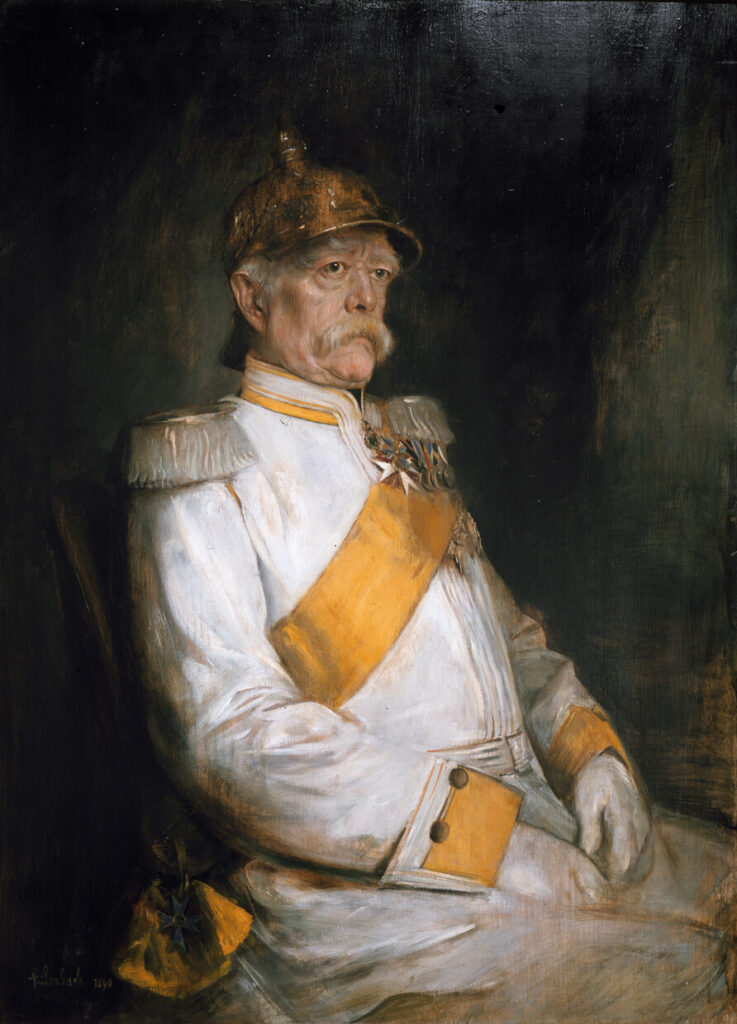
9. Berchtesgaden and the National Socialists (Nazis)
Bavaria, in particular Munich and Berchtesgaden, played a key part in the rise to power of the National Socialists during the 1920s and 1930s. It was in Munich that the young Adolf Hitler honed his beer hall rousing oratory and in the mountainside community of Obersalzberg, just outside Berchtesgaden, that he established a second seat of power for the Nazi regime once they were well on their way to power.
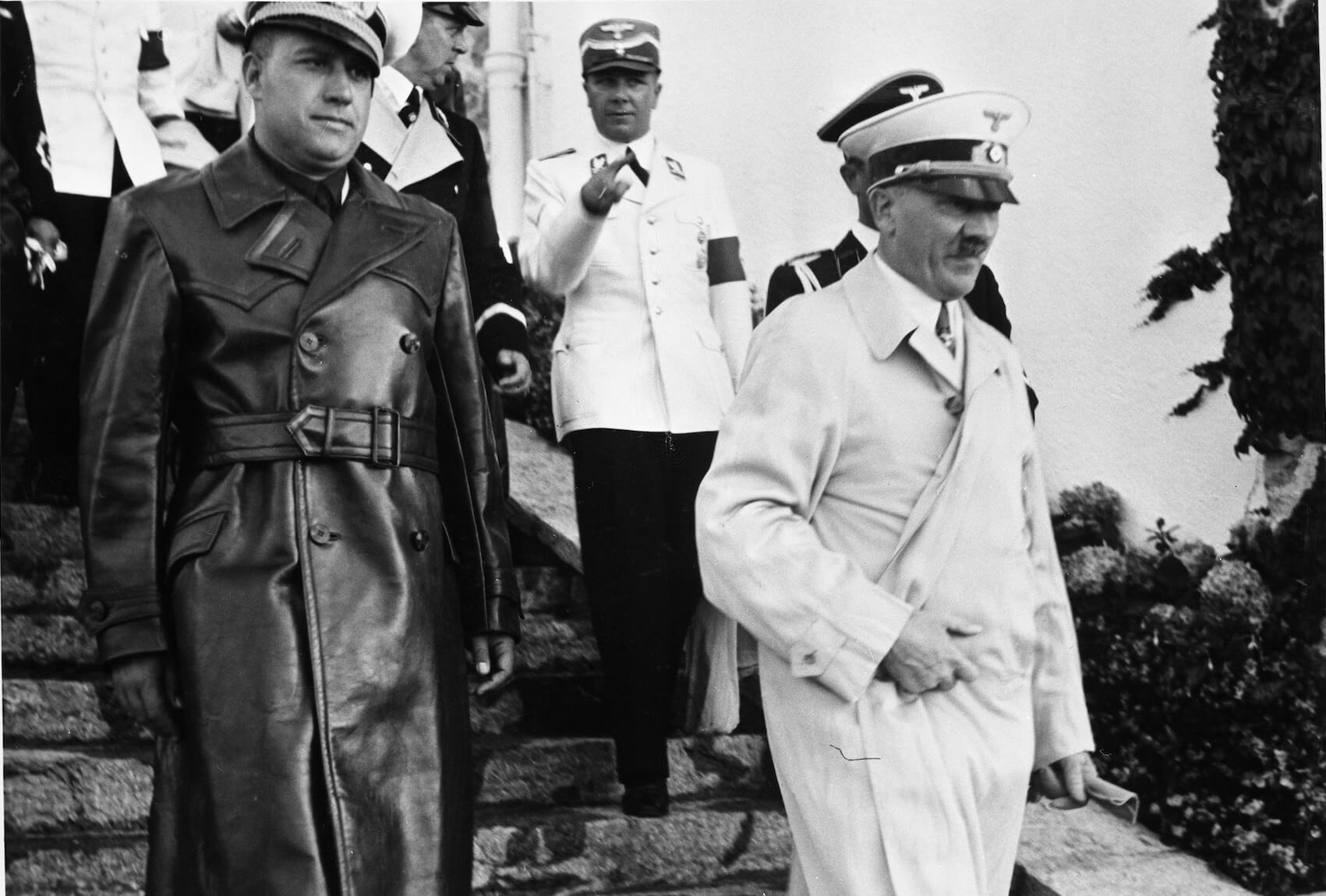
Hitler began visiting Berchtesgaden in 1923, even buying himself a home in the area, Haus Wachenfeld (later remodelled as the Berghof) when he achieved the office of Chancellor in 1933. The area became a location of pilgrimage for those wishing to catch a glimpse of the new Chancellor and this sudden change of pace in the area marked the beginning of the end for the Obersalzberg near Berchtesgaden, a once peaceful retreat.
Hitler tasked his private secretary Martin Bormann with converting the Obersalzberg into a secure area for the inner circle of the National Socialist administration, a process that ejected previous inhabitants, saw most previous buildings razed and many new structures put in place to accommodate the inner circle and some thousand ancillary personnel.
It was on the Obersalzberg near Berchtesgaden that many key decisions and plans were formulated, actions that shaped the course of the Second World War and jarred with this beautiful mountainside idyll where Hitler spend a third of his time whilst in power. Berchtesgaden itself was also transformed by the administration, with many local hotels and guesthouses repurposed for the use of German armed forces.
10. The Second World War Concludes
During the closing chapters of the Second World War in Europe, many of the key National Socialist locations within Bavaria were levelled by allied bombing; Obersalzberg, much of Munich, Nuremberg, Augsburg and Würzburg all suffered at the hands of allied carpet bombing. On the Obersalzberg most of the buildings of the Third Reich era were damaged by the raids, but the crowning feature of the off-limits area – the Eagle’s Nest, perched atop the Kehlstein mountain at 1841m (6040ft) above sea level – was miraculously spared. Even the original road and brass lined elevator of the Eagle’s Nest are still in situ, fully functional and open daily to tourist visits.

Berchtesgaden was chosen by the Third Reich administration as their final rallying point and it was thus the main objective of the western allies (British, American and French) in the closing stages of the conflict in Europe. On May 4th, the allied troops entered Berchtesgaden, keen to be the first to liberate the Obersalzberg. It’s a moot point as to who got there first, but consensus is that there are two main contenders: the American 3rd Infantry and the French 2nd Armoured Division. Hot on their heels was the American 101st Airborne division, who were met by local District president Theodor Jakob, keen to peacefully surrender the entire Berchtesgaden area. The American contingent decided to take the former Third Reich administration’s seat of Obersalzberg as their own and converted many of lightly damaged buildings and several buildings in the wider Berchtesgaden area into a rest and recreation resort for the use of US armed forces personal stationed in Germany.
11. The Wirtschaftswunder
Following the conclusion of the Second World War in Europe, the state of Bavaria and the town of Berchtesgaden found themselves in West Germany for the duration of the Bonn-based German Republic of 1949 to 1990. Fuelled by the economic miracle (Wirtschaftswunder) of 1950s West Germany, the state of Bavaria enjoyed growth in nearly all avenues of economic activity and Berchtesgaden’s reputation as a high-class tourist location was re-established.
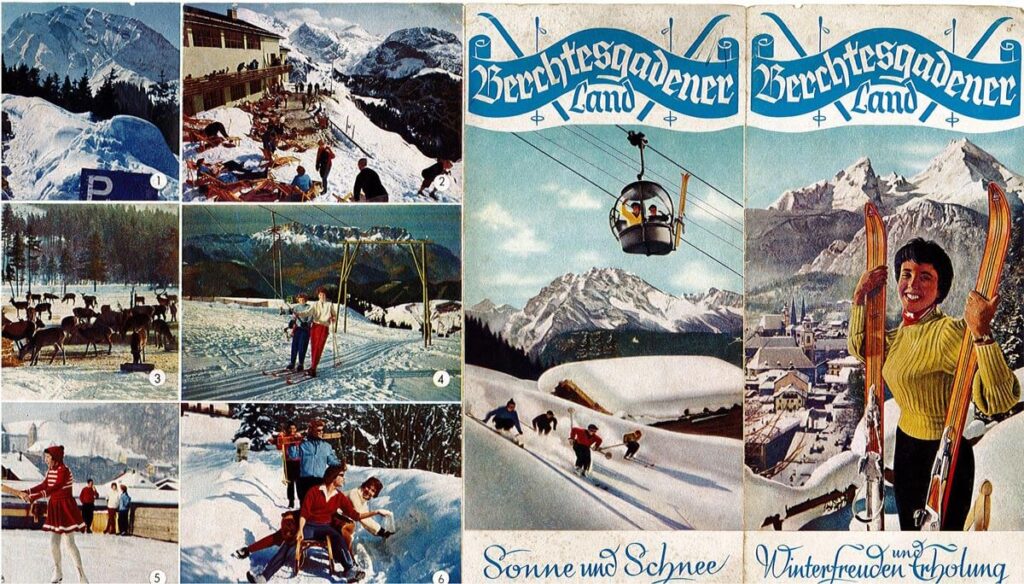
This status was boosted by the numerous visitors from both Germany and further afar curious to see the remains of the National Socialist’s second seat of power on Obersalzberg. This also included the US armed forces recreation resort, which, operating for some 50 years in total, saw millions of US forces members and their families visiting the region, doubtless contributing to the local economy by visiting Lake Königssee, the Salt Mines and Eagle’s Nest. Undiscovered Berchtesgaden offer bespoke tours of Lake Königssee, see our tours page for booking information.
12. US Armed forces and Berchtesgaden
The US armed forces rest and recuperation centre in Berchtesgaden finally closed in 1995 and saw control over the area ceded back to the Bavarian state. All remaining Third Reich structures bar the Eagle’s Nest and Party guesthouse were razed by the Bavarian authorities and an up to date Documentation Centre, explaining the relevance of the Obersalzberg within the Third Reich period of history was erected using the foundations of the former party guesthouse Höher Goll. For more information about the Documentation Centre see here. Undiscovered Berchtesgaden also offer bespoke tours including the Documentation Centre and Eagle’s Nest. See our tours page for booking information.
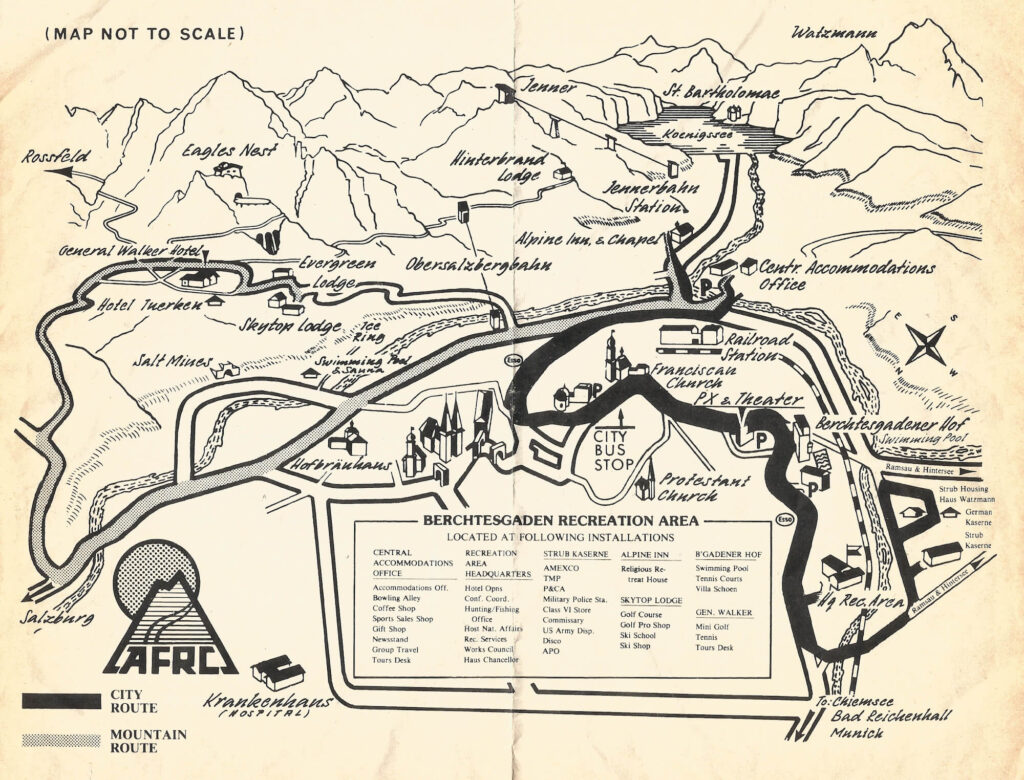
13. Berchtesgaden in 2024
Today Berchtesgaden is known as the jewel of the Alps and is one of the most popular destinations for travellers from both within Germany and the rest of the world. The area is proud if its history and customs, both protecting and practicing them with equal vigour. Lake Königssee, with its electric boats and the chapel of St Bartholomä, welcomes some 600,000 visitors per year to what is arguably the most picturesque lake in the Alps, demonstrating that modern tourism and the preservation of local customs and traditional attitudes can work in harmony. Undiscovered Berchtesgaden offers a complementary guide of Lake Konigsee here and runs personal tours that can be booked here.
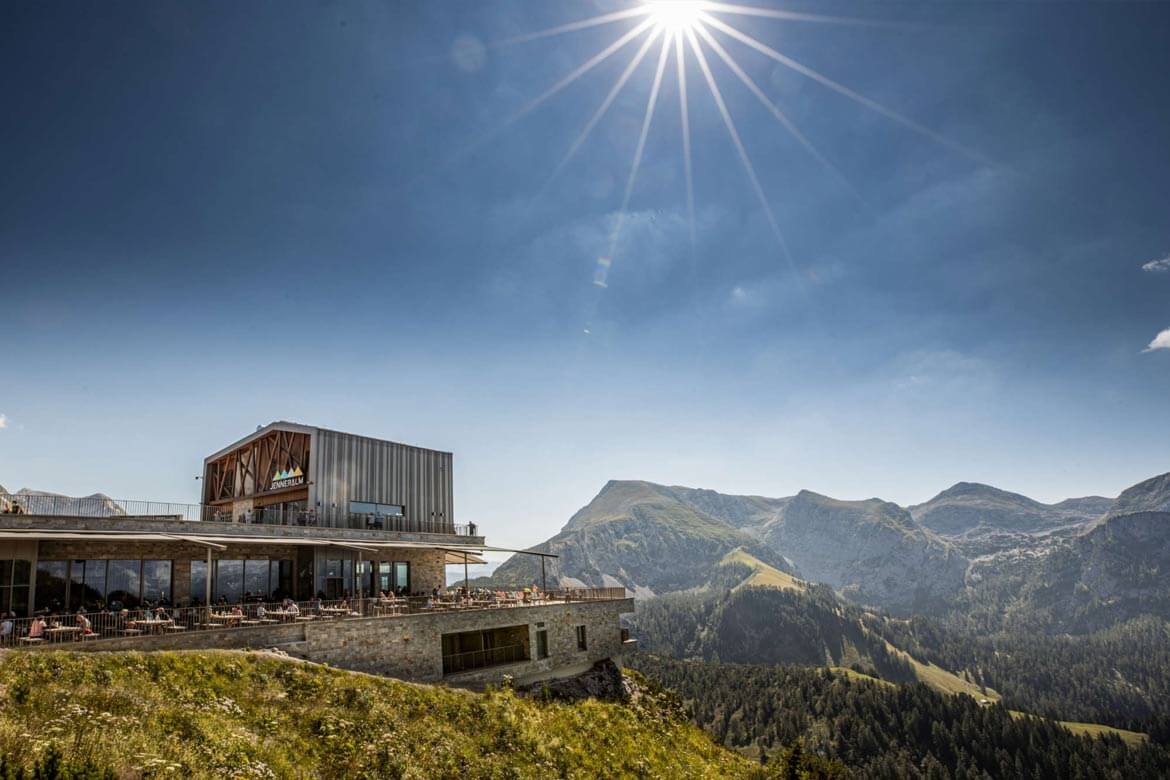
Some 400,000 visitors per year take the winding Kehlsteinstraße (Eagle’s Nest road) to visit the Eagle’s Nest, the once crowning feature of the Third Reich complex upon the Obersalzberg, and make use of a facility used just 14 times by Hitler himself. Undiscovered Berchtesgaden offers a complementary guide here and runs personal tours that can be booked here.
What most modern visitors remember about their trip to Berchtesgaden, though, is the natural beauty of the area. Berchtesgaden is home to Germany’s only alpine national park, the Berchtesgadenerland National Park, and UNESCO recognise the 210 square kilometres (81 square miles) of alpine wilderness as a protected biosphere. Two of Germany’s five glaciers can be found in the national park, along with the Watzmann, Germany’s second highest mountain – although it’s the highest mountain situated entirely in Germany.
